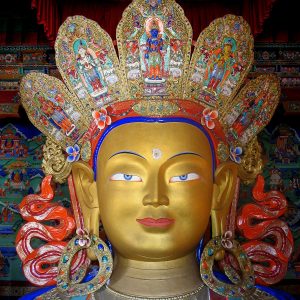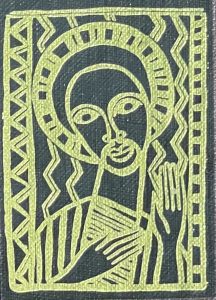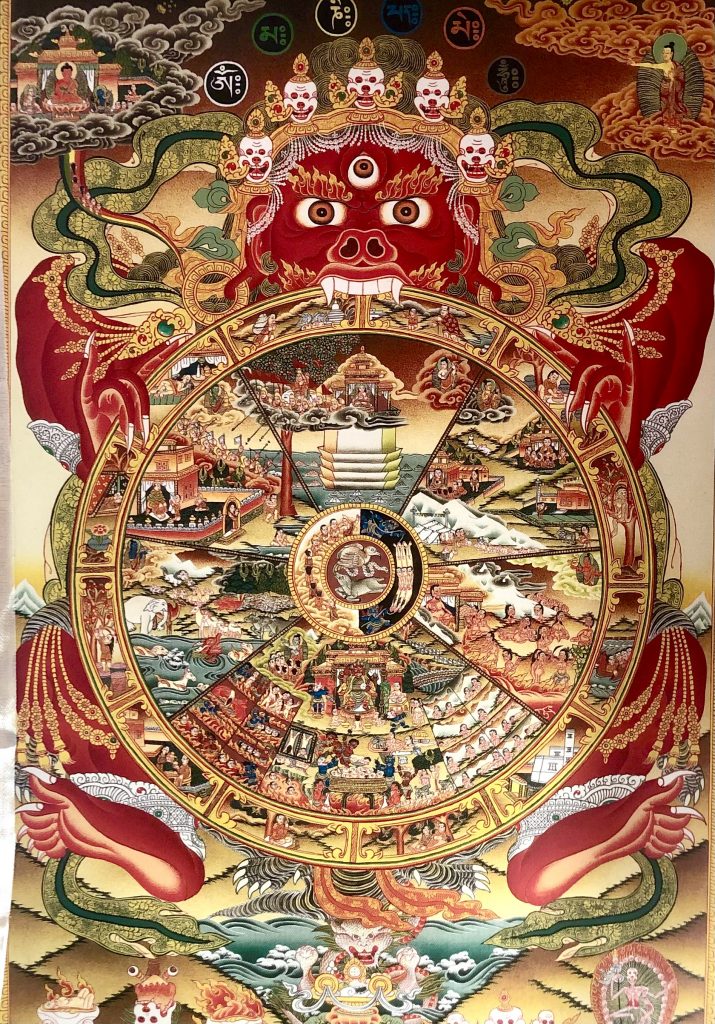From “Mother of the Buddha’s’Meditation on the Prajnaparamita Sutra” compiled by Lex Hixon. Herein, selections from “Mahayana Immeasurability” wherein Subhuti enlightens Shariputra in the presence of Lord Buddha.
Buddha, bodhisattva, prajnaparamita-these are merely abstract terms, composed of certain sounds and letters, correlated with certain conventional perceptions and concepts. What they point at has never substantially come into being. What they indicate is an uncreated and, hence, ungraspable and unthinkable presence. The same is true of the terms self and universe. Although we speak conventionally about the personal self, assuming that we are encountering it constantly, no self with separate identity of any kind has ever come substantially into being. That all structures and processes have never been created simply means that they appear vividly and function coherently without possessing any independent essence that can be isolated, grasped or formulated in any way.
…
When this most radical truth is unfolded to an aspirant without causing the slightest fear or anxiety, then one can know, with confidence, that the aspirant is a bodhisattva, an adamantine awareness who flows as Perfect Wisdom. With each breath, thought and perception, bodhisattvas investigate and meditate upon Prajnaparamita,
…
The absence of the substantial creation of any form is not different from the radiantly transparent, harmonious and coherent functioning of all forms. Thus absolute openness and relative functioning are not divided. They are not two alternative dimensions, but utter simplicity. If one labels and thereby expériences this expansive simplicity as material form and personal consciousness, one is foolishly numbering and labeling that which has no multiplicity and no identity. The bodhisattva investigates and meditates upon all structures, processes and dimensions as simplicity, and therefore does not approach or even encounter any substantial forms or independent states of consciousness.
…
These diamond beings meditate: “Our longing to be free from suffering is simply the longing of all that lives to be free from suffering.” Bodhisattvas permeate their daily awareness with this commitment: “We can never desert for an instant even one of these beloved beings. We can only live to liberate them all without exception from their terrible burden of delusive suffering. We can never generate the slightest thought of hatred or even irritation toward any of these precious beings, even though they may torture or destroy our bodies during a hundred consecutive lifetimes.” This is the spirit with which bodhisattvas dedicate their mind and heart to conscious beings, recognizing all beings as their very own most intimate consciousness.
One who exists solely as this boundaryless mind and heart of wisdom and love will not perceive difficulties simply because one never perceives separation, substantiality or limit. The ease, freedom and delight of Mother Prajnaparamita flows through the awareness of the bodhisattva, a constant reminder that no personal self exists substantially or independently, just as no apparent structure of the universe exists substantially or independently. This principle of ontological transparency applies to every subjective or objective structure or process that can possibly be experienced by any consciousness.
Thus the consecrated heart of love is identical with the clear mind of transcendent insight. There is no substantial coming into being of any difficulty or nobility, just as there is no substantial coming into being of any bodhisattva, pilgrimage or path.





